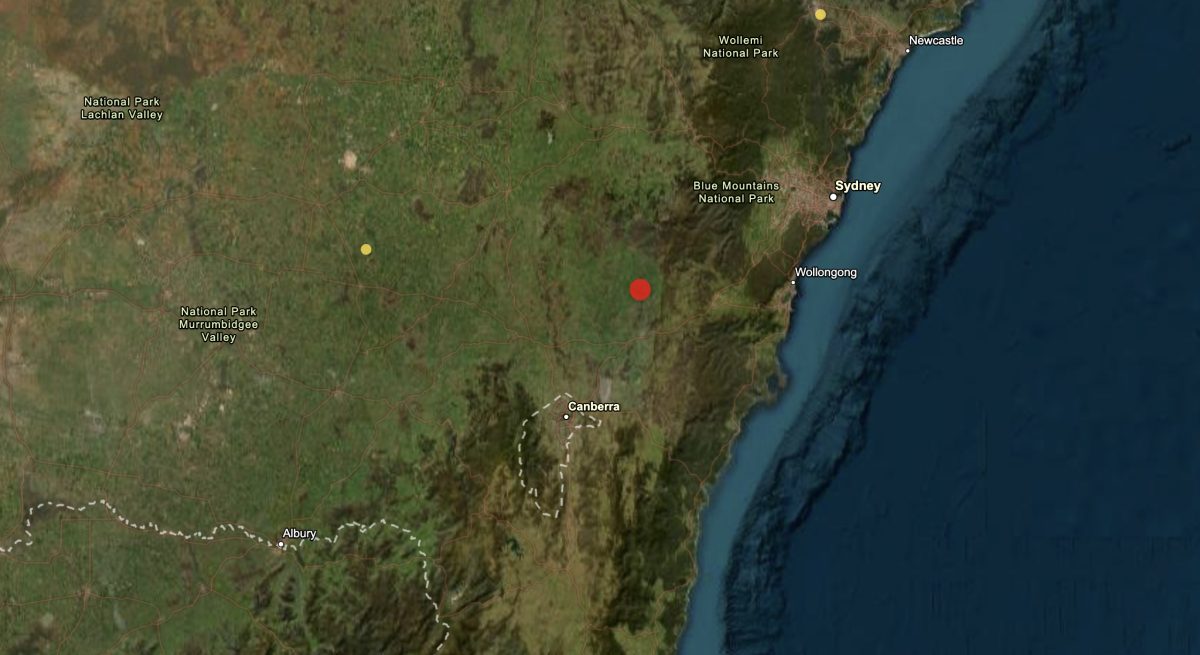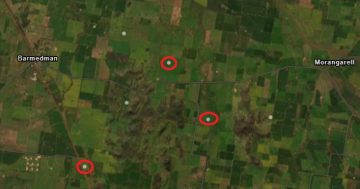
A magnitude 3.9 earthquake has struck at Taralga, near Goulburn. Image: Geoscience Australia.
A magnitude 3.9 earthquake has been recorded near Goulburn in the early hours of the morning, with shaking felt in surrounding areas.
The 3.9 magnitude earthquake struck at about 6:40 am today (23 May), at a depth of one kilometre below the surface.
Geoscience Australia senior seismologist Doctor Hadi Ghasemi said more than 400 people had reported shaking or other signs to Geoscience Australia.
“We have a relatively high number of stations in the Canberra region, so we were able to pick up the seismic event at the closest station [which was] Dalton at 57 kilometres from the epicentre,” he said.
“Closer to the epicentre in Goulburn and the nearby region, people were generally reporting a moderate or sometimes a strong level of ground shaking.
“That level drops quickly as the further you go away from the epicentre.”
The epicentre was near Taralga, which is about 45 km north of Goulburn in the NSW Southern Tablelands.
Dr Ghasemi said there were no reports of damage.
“I would say any major damages would be unlikely, given the size of the event,” he said.
“I won’t rule out the possibility of minor damages.”

The epicentre has been located at Taralga, in the NSW Southern Tablelands region. Image: Geoscience Australia.
Thursday’s early morning earthquake follows others that have struck the region, such as a magnitude 3.2 earthquake recorded between Crookwell and Boorowa in June 2023.
“If you look at the vicinity [of that part of NSW], it’s not uncommon to have earthquakes,” Dr Ghasemi said.
“In a 100-kilometre radius [from Thursday’s epicentre], we have actually had more than 250 earthquakes that we detected.
“All of them were small earthquakes, and 20 of them had a magnitude of three or larger.”
Dr Ghasemi said Geoscience Australia wasn’t expecting the region to suddenly experience a large number of earthquakes.
“An earthquake follows a general pattern, where a slow build-up of stress within the interior of the continent eventually gets released in the form of [an] earthquake,” he said.
“This one was due to that stress relief mechanism.
“We receive data in a near real-time fashion and a seismologist is on duty 24/7.
“As soon as the alarm for an earthquake goes off, they check the data and publish an alert.”
People can submit a felt report via Geoscience Australia’s website on what they observe during an earthquake.









